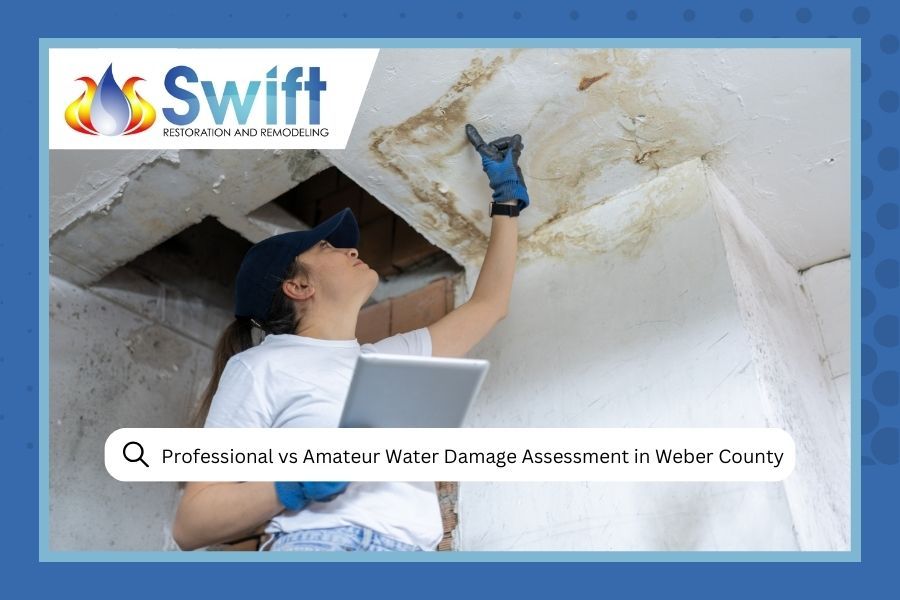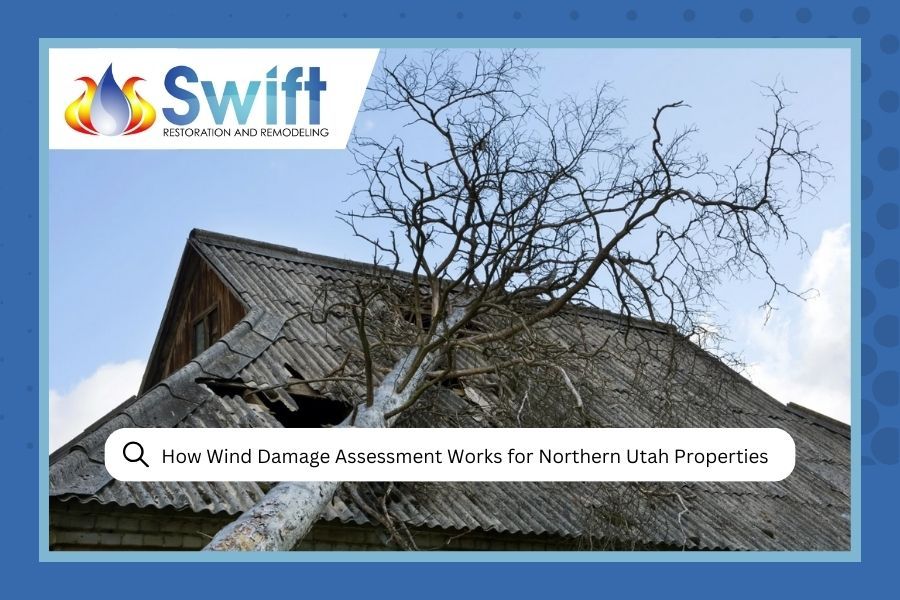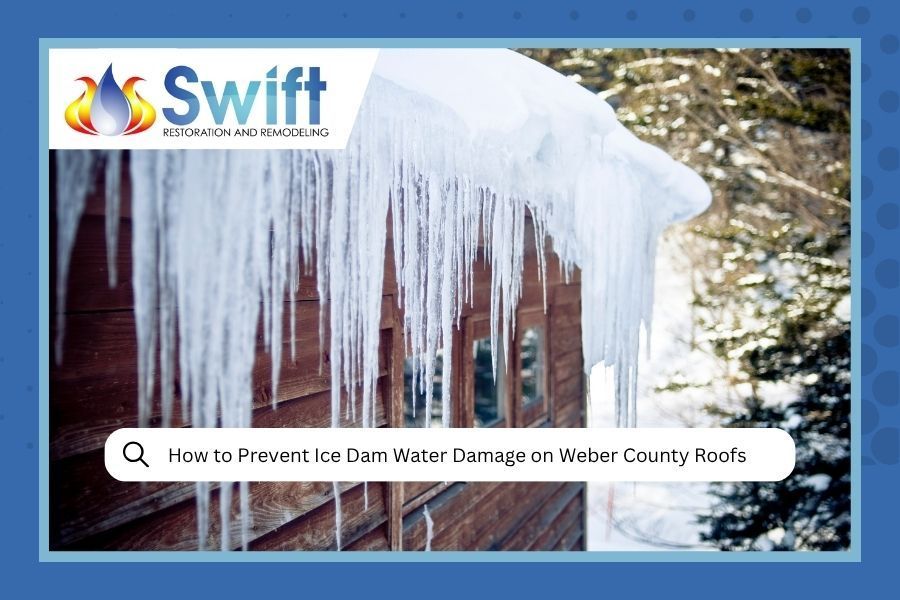
Author: Darin Jenks
Jump to Section:
If you've ever dealt with ice dams, you know they're not just a winter nuisance, they're a genuine threat to your home. Those pretty icicles hanging from your roof? They're often a warning sign that water damage restoration might be in your future. At Swift Restoration and Remodeling , we've seen firsthand how ice dam water damage can wreak havoc on Weber County homes, and the good news is most of it is preventable.
Ice dams form when heat escapes from your home and melts the snow on your roof. That melted water runs down to the colder edge of your roof, refreezes, and creates a dam. Then, more melting water backs up behind that ice barrier and has nowhere to go but under your shingles and into your home. It's like watching a slow-motion disaster unfold right above your ceiling.
Understanding How Ice Dams Form on Northern Utah Roofs
Weber County winters can be brutal. We get heavy snowfall, fluctuating temperatures, and everything in between. This creates perfect conditions for ice dam formation. Here's what happens: Your attic gets warm from escaping heat, which melts the snow on your roof from underneath. As this water trickles down to the colder eaves, it refreezes. Add more melting snow, and you've got yourself a growing ice dam.
The Ice Dam Formation Cycle
Step 1: Heat Escape
Warm air from your home rises into the attic, heating the roof deck and melting snow from underneath.
Step 2: Water Flow
Melted snow runs down the roof slope as water, following gravity toward the roof edge.
Step 3: Refreezing
When water reaches the cold eaves (where there's no heat below), it refreezes and forms ice buildup.
Step 4: Dam Creation
Continuous freeze-thaw cycles create a growing ice barrier that traps water, forcing it under shingles.
The real problem starts when that trapped water finds its way under your shingles. It seeps into your attic, drips onto insulation, saturates ceilings, and runs down walls. Before you know it, you're dealing with water stains, damaged drywall, ruined insulation, and potentially even mold growth. Similar to issues you might face with ceiling water damage , ice dam damage requires quick action to prevent long-term problems.
The Weber County Weather Factor
Our local weather patterns make ice dam prevention especially important. We see frequent freeze-thaw cycles where daytime temperatures rise above freezing, melting snow, and then nighttime temperatures plunge, creating ice. This cycle is brutal on roofs and creates prime conditions for ice dams to form and grow.
Worried About Ice Dam Damage?
Don't wait until water starts dripping through your ceiling. Our team is available 24/7 for emergency water damage situations.
Fill Out This Form for a Free EstimateEssential Ice Dam Prevention Steps for Weber County Homeowners
Preventing ice dams is way easier (and cheaper) than dealing with the water damage they cause. Here's what actually works:
Keep Your Attic Cold
This is the single most important thing you can do. Your attic temperature should be close to the outdoor temperature. If your attic is warm enough to melt snow on your roof, you've got a problem. Check your attic insulation levels, make sure you have proper ventilation, and seal any air leaks between your living space and attic.
Improve Attic Ventilation
Good ventilation lets cold air flow through your attic, keeping the roof deck cold and preventing snowmelt. Ridge vents, soffit vents, and gable vents all work together to create airflow. If you're not sure whether your attic ventilation is adequate, it's worth having a professional take a look.
Seal Air Leaks
Warm air from your home finds its way into the attic through all sorts of sneaky spots: recessed lights, plumbing vents, attic hatches, and gaps around chimneys. Sealing these leaks keeps warm air where it belongs and your attic cold. Just like addressing water issues in a crawl space , preventing air leaks requires attention to detail.
Add or Upgrade Insulation
Proper insulation does double duty: it keeps your home warm and your attic cold. If you can see your ceiling joists in your attic, you probably don't have enough insulation. Current recommendations for Utah homes call for R-49 to R-60 insulation in attics.
Winter Roof Maintenance Checklist
- Before Winter: Clean gutters and downspouts thoroughly
- Before Winter: Inspect and repair roof flashing and shingles
- Before Winter: Check attic insulation levels and condition
- Before Winter: Ensure attic ventilation is working properly
- During Winter: Remove heavy snow buildup after major storms
- During Winter: Watch for icicle formation and ice buildup
- During Winter: Monitor attic temperature during cold snaps
- During Winter: Check ceilings for water stains or dampness
Safe Snow Removal Techniques for Preventing Ice Dams
Sometimes, despite your best prevention efforts, you need to remove snow from your roof to prevent ice dam formation. But here's the thing: getting on a snow-covered roof is dangerous. If you're going to do it yourself, use a roof rake from the ground. These long-handled tools let you pull snow off the edge of your roof while keeping your feet safely on solid ground.
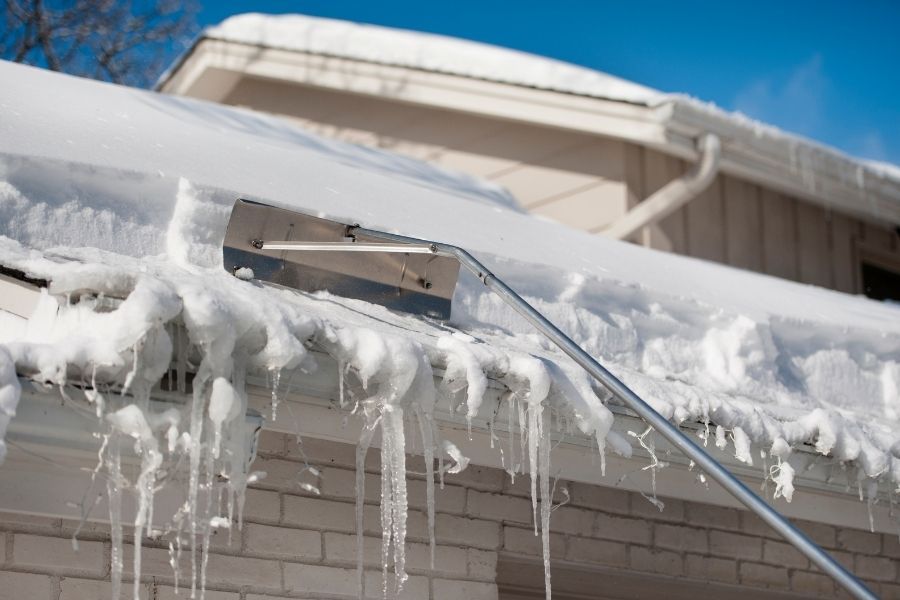
A roof rake allows you to safely remove snow from the ground without climbing onto your roof.
What Not to Do
Don't chip away at ice dams with a hammer, ice pick, or other sharp tools. You'll almost certainly damage your shingles and might even puncture your roof, creating the exact water damage you're trying to prevent. Also, never use rock salt or calcium chloride directly on your roof, these chemicals can damage roofing materials.
National data shows water damage and freezing are among the most common homeowners insurance claims, with ice dams being a significant contributor. Taking preventive action now can save you thousands in repairs later.
Emergency Response: What to Do If Ice Dams Cause Water Damage
Even with the best prevention, sometimes ice dams win. If you notice water stains on your ceiling or walls, don't wait. Water damage gets worse every hour you delay. Here's what to do:
- Move furniture and valuables away from the affected area
- Place buckets or containers to catch dripping water
- If safe to do so, remove ceiling insulation that's gotten wet
- Call a professional restoration company immediately
- Document the damage with photos for insurance purposes
- Check for signs of mold growth in affected areas
Understanding the process of water damage assessment helps you know what to expect when professionals arrive. Quick action makes a huge difference in how much damage occurs and how much restoration costs. If you're dealing with water damage right now, get immediate help before it spreads.
Working with Insurance on Ice Dam Damage
Most homeowners insurance policies cover sudden and accidental water damage from ice dams. However, they might deny claims if they determine the damage resulted from lack of maintenance or gradual deterioration. This is why documenting your prevention efforts and responding quickly to damage matters. Professional leak detection services can also help identify hidden water infiltration before it becomes a major problem.
The Insurance Institute for Business & Home Safety recommends taking photos of your roof, gutters, and attic conditions throughout the winter. This documentation can support your claim if ice dam damage occurs.
Long-Term Solutions for Chronic Ice Dam Problems
If your home deals with ice dams every winter, it's time to consider more permanent solutions. These investments pay for themselves by preventing repeated water damage:
Install Heat Cables
Heat cables, also called heat tape, run along your roof edge and through gutters. They create channels for melting water to escape before it can refreeze. While they're not a cure-all, they're effective for homes that consistently battle ice dams.
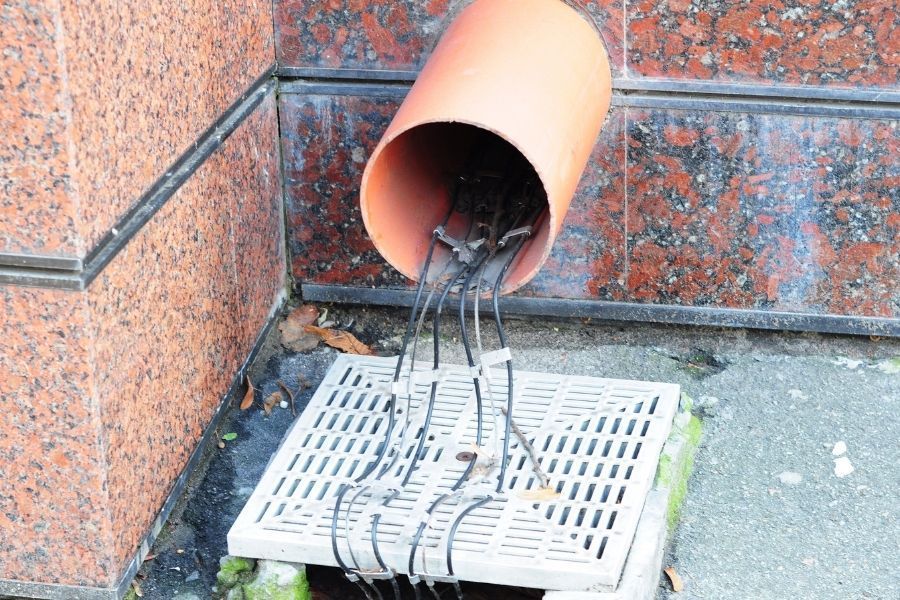
Heat cables installed along the roof edge and in gutters help prevent ice dam formation by keeping water flowing.
When professionally installed, heat cables provide reliable protection during the harshest Weber County winters. They're especially valuable for north-facing roof sections and areas where ice dams form repeatedly.
| Solution | Cost Range | Effectiveness | Best For |
|---|---|---|---|
| Heat Cables | $200 - $600 | High for chronic problems | Homes with repeated ice dam issues |
| Improved Insulation | $1,500 - $3,000 | Very High | Homes with inadequate attic insulation |
| Ventilation Upgrades | $300 - $2,000 | Very High | Homes with poor airflow |
| Ice & Water Shield | $500 - $1,500 | High (during roof replacement) | New roofs or major repairs |
| Air Sealing | $300 - $1,000 | Very High | All homes with ice dam problems |
Improve Your Roof's Design
Some roof designs are more prone to ice dams than others. Low-slope roofs, complex roof lines with multiple valleys, and roofs with minimal overhangs are all ice dam magnets. During a roof replacement, consider these design factors to minimize future ice dam problems.
Install Ice and Water Shield
When you're getting a new roof or doing major roof repairs, have your contractor install ice and water shield underlayment. This waterproof membrane goes under your shingles and provides an extra layer of protection against water infiltration if ice dams do form.
Why Professional Assessment Matters
Not all ice dam situations are obvious. Sometimes the damage is happening where you can't see it, in your attic, behind walls, or under insulation. That's why getting a professional assessment makes sense, especially if you've had ice dams in previous winters.
At Swift Restoration and Remodeling, we've helped countless Weber County homeowners identify vulnerabilities before they become expensive problems. We look at your entire system, from insulation and ventilation to roof condition and gutter performance. Often, we find issues that aren't immediately obvious but are setting you up for ice dam problems.
The Bottom Line on Ice Dam Prevention
Preventing ice dam water damage on Weber County roofs comes down to three main factors: keeping your attic cold, maintaining proper ventilation, and staying on top of winter roof maintenance. Most prevention strategies are relatively affordable, especially compared to the cost of repairing water damage from ice dams.
The key is taking action before winter hits hard. Once ice dams form and water starts infiltrating your home, prevention becomes damage control. Don't wait until you see those telltale water stains spreading across your ceiling.
Remember, similar to preventing other types of roof leaks , staying proactive with ice dam prevention saves you money and stress in the long run. A little effort now means a lot less worry when those Weber County winter storms roll in.
Frequently Asked Questions About Ice Dam Prevention
Ice dam water damage doesn't have to be part of your Weber County winter experience. With proper prevention and quick response when problems arise, you can protect your home and your peace of mind all season long.



